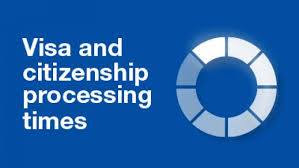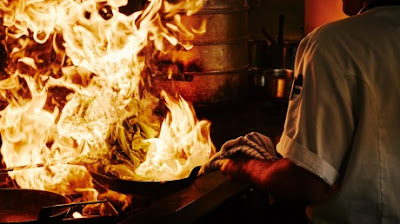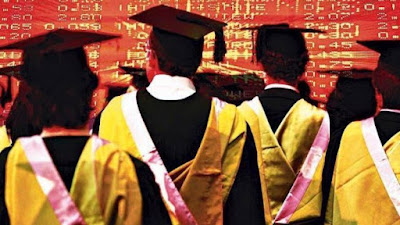AUSTRALIA MEET TWO TOP CHEFS ONE FROM EL SALVADOR WHO ARRIVED WITH PARENTS WHEN ONLY 2 YEARS OLD AND ONE ITALIAN WHO ARE SETTLING BRISBANE SCENE ALIGHT
Top chefs setting Brisbane’s dining scene alight
JOSUE LOPEZ
GOMA Restaurant, South Brisbane
He’s the head chef at one of Brisbane’s top dining rooms and now Josue Lopez can also add television presenter to his list of career credits.
The 33-year-old father of two appeared on Network Ten’s MasterChef Australia just over a week ago, setting contestants the task of recreating one of his most challenging dishes – “After the Eucalypt Fire”. The pairing of emu and lilly pilly symbolises new life after bushfires.
“I was honoured to be invited on MasterChef, particularly as I am a huge fan,” he says.
Chef Josue Lopez with MasterChef contestant Trent Devincenzo. Picture: Supplied, Channel 10
Chef Josue Lopez with MasterChef contestant Trent Devincenzo. Picture: Supplied, Channel 10
“It was a privilege to be a part of it, but for me the food still comes before being famous.”
His passion for food was ignited at an unlikely place – McDonald’s Coorparoo, where Josue worked after finishing high school.
“Whenever I made Quarter Pounders my mates would say they were delicious and the best they’d ever had. I think that’s because I knew they were for my friends so I put extra love and care into them,” he says.
“That was when I first discovered the emotional connection with cooking and decided to pursue it.”
Born in El Salvador, Josue arrived in Australia with his parents at the age of two. The family settled in Brisbane, and Josue recalls his mum feeding his friends tacos on Tuesdays.
“My mum never backed herself, but she was the best home cook,” he says. “I was the kid at school with the best packed lunches and there was always too much food so I shared it around.”
Today, Josue’s approach to food is a culmination of his time spent at Gordon Ramsay’s Maze in London, Noma in Copenhagen – four times ranked world number one restaurant – as well as stints at local restaurants Spring, Moda and Two Small Rooms.
He describes GOMA’s take on food as a “unique dining style mostly influenced by local ingredients”, but has fond memories of a special cultural night he held last year featuring dishes from his homeland.
“There were pupusa canapes – a tortilla filled with beautiful fresh cheese. I used local buffalo mozzarella and feta, peppers and a tomato salsa. I also made a gallo en chicha, which is basically a Spanish coq au vin.
“It was a bit of an emotional experience creating these dishes, because food was a big part of my upbringing and I wanted to do my mother justice.
“As a family we celebrated food, and I have great memories of this, which I hope to make more of now that I’m a father.”
Josue Lopez at home with Krystal and their children Ezekiel and Jemima. Photo: Ric Frearson
Josue Lopez at home with Krystal and their children Ezekiel and Jemima. Photo: Ric Frearson
At home in Camp Hill, Josue rarely does the cooking. Wife Krystal, 33, whips up delicious dinners for him and children Jemima, 5, and Ezekiel, 4.
“She’s superb,” he says.
“It’s hard to create restaurant food at home because I don’t have the manpower and time, but I always use fresh ingredients. It’s all about eating clean.
“We recently bought a new barbecue so I did some lovely salmon portions with a coleslaw and salad of fresh tomato and rocket.”
And of course Josue still has a soft spot for McDonald’s.
“There’s something about that tangy Big Mac sauce and the balance between the melted cheese and the patties that just gets me every time,” he laughs.
- Words by HANNAH DAVIES
.
Khanittha ‘Bowyo’ Muangsong
Pawpaw Cafe, East Brisbane
If one dish was to encapsulate both the Thai heritage and Australian training of Khanittha Muangsong, it would be her kangaroo pad ped.
The aromatic spiciness of red curry paste paired with kangaroo meat was a hit with diners when it debuted at Woolloongabba’s Pawpaw Cafe.
“We grilled the kangaroo first, sliced it then stir-fried it in the pad ped sauce,” says Khanittha, known to all by her nickname, Bowyo. “It was quite popular even though some people thought it might be too spicy or wouldn’t match with the kangaroo but then they tried it and liked it.”
As executive chef, the 29-year-old is the architect in Pawpaw Cafe’s signature fusion of eastern and western cuisines, borne of her desire to entice local palates to try flavoursome Thai cuisine.
To counter the common misconception that all Thai food is spicy, she makes her own curry pastes and bases to control the heat of a dish.
Khanittha Muangsong. Photo: Ric Frearson
Khanittha Muangsong. Photo: Ric Frearson
“We know western (diners) don’t like strong chilli or too much spice so my mum taught me how to turn all the herbs into a green curry paste.
“She didn’t use much of the green chilli at all, just green herbs like lemongrass, Thai basil, coriander, as well as ginger, garlic and turmeric.”
Her Bangkok-based mother, Duangdee Tanyongthong, was a chef at Thai restaurants in France before opening her own restaurant at home.
Surprisingly, Bowyo had little interest in following in her mother’s footsteps until she moved to Brisbane 12 years ago to work part-time at her aunt Kittiya Tanyongthong’s Milton restaurant, Thai Terrace, while she studied English.
Encouraged by her aunt and cousins, she enrolled in a TAFE cooking course. “I liked creating new, different things, not just following the recipe,” she says.
Bowyo melded her new skills with the flavours of her homeland to create unique menus. Dotted among Pawpaw Cafe’s breakfast staples of pancakes and eggs on toast is more unusual fare such as Thai omelets stuffed with succulent duck meat, Asian herbs and pungent hoisin sauce. And while the kangaroo pad ped has bounded from the menu, the innovative chef continues to marry local ingredients with traditional dishes.
Bowyo’s tamarind fish is made with crispy barramundi fillets and her green curry combines wagyu beef with kaffir lime and lychee. “About 80 per cent of my customers prefer to get the traditional flavour,” she says.
- Words by BELINDA SEENEY
.
MASSIMO SPERONI
Bacchus, South Brisbane
Massimo Speroni has no intention of serving hearty bowls of pasta. When the Italian-born chef took over as head chef at Bacchus Restaurant in January his plan was to share the culture and style of his homeland’s cuisine, rather than saturate the menu with trattoria favourites.
“I don’t want to be like an Italian restaurant here,” Massimo, 32, says.
“For the mains, we don’t have a lot of Italian dishes but more done in the style of Italian.”
“I’m not a potato gnocchi lover so I’ve changed the recipe,” he says. “It’s black ink gnocchi made from fish and squid ink and we serve it with mussels and calamari which we source from Australia, so the idea is like an Italian dish but we buy everything from here.”
Massimo Speroni. Photo: Ric Frearson
Massimo Speroni. Photo: Ric Frearson
So while he draws inspiration from his European heritage, Massimo’s clear intention is to source Australian products and fuse the two cultures in the kitchen.
“I just want my experience from Italy, the products I know and the products here to match and make something nice, something different.”
Massimo laments an absence of high-quality traditional mozzarella and prefers to import parmesan and balsamic vinegar from Italy, but he estimates 90 per cent of the ingredients he uses are sourced locally.
“I’m still trying to get my taste here for using the local products which is a big challenge,” Massimo says, listing finger limes and parsnips as new favourites.
Along the way he has introduced a “raw and cured” section of fresh seafood and meats designed to share at the start of the meal and set a relaxed dining pace.
“Italians eat more, it’s the lifestyle,” he says. “Like on a Sunday, you sit at the table at 12.30pm, maybe don’t get up until 5pm. It’s famiglia, it’s time to spend together.
“With this kind of restaurant, you come to make an experience so I’m trying to get the customer to eat as much (variety) as I can.”









